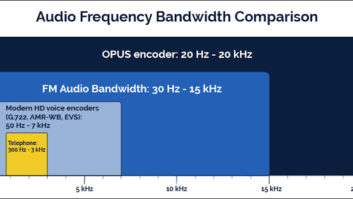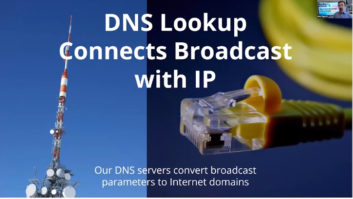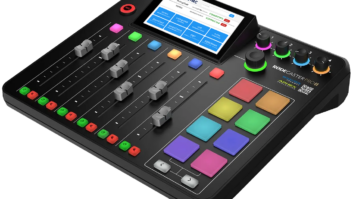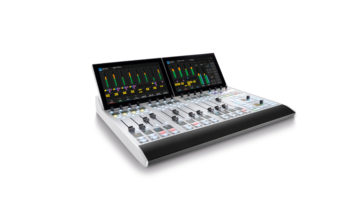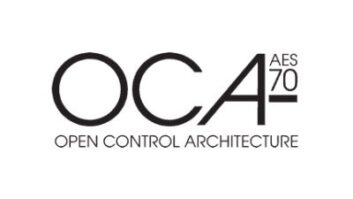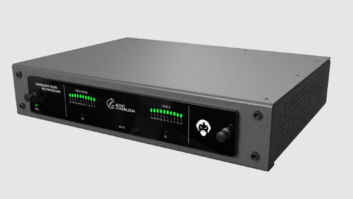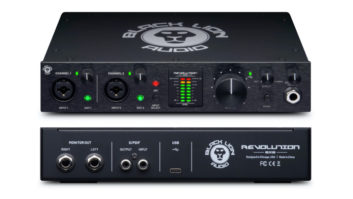It should be apparent by now that future broadcast and media infrastructure will be IP-based. The advantages include simpler cabling, remote device management, easier interconnection, increased channel count per connection, and the prospect of utilizing existing network infrastructure to minimize cable costs. The hands-on experience I’ve had with audio over IP equipment to date has been incredibly positive and the occasional issues experienced when interconnecting devices that use different protocols is being sorted out quickly thanks to solidifying industry standards.
As optimistic as I am about the technology and the positive results it will yield, there is an underlying issue with moving everything to the network that no one is talking about — the relationship between the information technology and broadcast engineering departments. It appears that the technology portion of this transition has been maturing nicely while the collaboration piece is still a bit rocky.

The foundation of a new network.
YOU WANT IT FAST OR RELIABLE?
An IT department provides networking, desktop support, and most importantly, security to our businesses — not to serve broadcast — and the scale of the IT industry dwarfs ours. One benefit of being so massive means that IT equipment is less expensive and more widely available than traditional broadcast gear so our industry has gravitated toward it as a way to cut costs and capitalize on existing technology, leading to crossover and conflict. IT managers understand the needs of the business in ways broadcast engineers likely never will but they have trouble wrapping their heads around the immediacy and urgency of the television and media worlds. Where IT has very structured processes, broadcast was built on and often still operates by the seat of its pants. These differing methodologies have given rise to a question that is not easy to answer: Should television engineers become IT engineers? The answer is, as usual, “It depends.” End users simply connecting equipment and using it for production are probably fine continuing on their merry way, however, support engineers would be well-served to develop their skills in IT protocols, networking, hardware and security.
Supporting just a handful of the protocols used in the AES67 interoperability standard for audio over IP would require engineers to have some understanding of Internet Group Management Protocol (IGMP), Internet Protocol (IP), Precision Time Protocol (PTP), Real-Time Transport Protocol (RTP), Session Description Protocol (SDP), Session Initiation Protocol (SIP), and User Datagram Protocol (UDP). This collection of standard IT protocols is used to initiate, describe, and deliver packets of audio over a network with minimum latency, but knowing the function of each is helpful for troubleshooting audio-over-IP transport issues, just as understanding circuits and signal flow helps an engineer diagnose issues when equipment fails.
ALL OR NOTHING?
Networking is more than just the parts and pieces used to glue things together; it also includes deciding where equipment will live on the network and how devices will interact with each other and users. Among the most immediate questions are whether broadcast equipment will reside on the business network or on a separate media network, and whether it will need access to the outside world, or simply reside on a closed, purpose-built network. Keep in mind that as a network’s complexity increases, so does the knowledge required to build and maintain it, and the level of security necessary to protect it. My experience to this point is that IT wants control of everything that touches the business network, so broadcast ends up creating a separate network, totally eliminating the advantage of using the existing IT infrastructure. Building a separate network requires not just the installation of more cable and connectors, but additional switches, routers, and firewalls. However, the additional equipment costs are generally offset by the time saved not waiting on decisions and responses from IT, with engineering taking over as the de facto local administrators that are already primed to respond to the needs of the broadcast environment.
Security of the network and the devices residing on it is the most critical area and the trickiest to get right. Implementing hardware firewalls (AKA Adaptive Security Appliances or ASA), closing open ports, and installing antivirus and anti-malware software are absolute minimum security measures for every network. Care needs to be taken that any security software running on production machines does not interfere with or bog down the systems. Some antivirus suites are notorious resource hogs so everything should be thoroughly tested prior to full rollout. Full-time and temporary remote IP connections for interviews or content contribution are part of daily broadcast operations that open networks to the outside world so the connection path should be planned carefully and only necessary ports should be allowed access. External IP addresses that redirect through the internal firewall, private virtual local area networks (PVLAN), and VLAN Access Control Lists (VACL) are tools that give access to the internal network while keeping it secure and, though they are complicated to configure, tend to provide consistently reliable connections.
Fortunately, there are already people working in broadcast who understand the world of IT but have found satisfaction working in broadcasting, despite the chaos and odd schedules. For the rest of us, there is a learning curve ahead, even if we aren’t seeking certifications or in-depth IT knowledge. The world of IP for media and television is here and broadcast engineers of all disciplines need to improve their IT skills to stay relevant. Whether improving IT skill sets leads to CCNA or CompTIA certifications will depend on the desire of the engineer and the needs of the business, but it certainly won’t hurt the broadcast or IT departments to have more skilled people around.
— TV Technology





